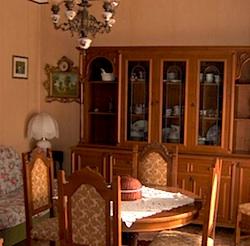Until recently the idea of buying second-hand furniture – unless, of course, it was antique and preferably all in the same style – had always triggered the “vergogna [shame] factor” for Italians. Even to accept non-antique items of furniture from well-meaning relatives when you were setting up home for the first time was a secret best kept to yourself. Not any more, however, for if there is one market sector which is doing well in an uncertain era, it is the second-hand trade. In fact, the term “second-hand mania” has been coined.
According to the Milan Chamber of Commerce, Rome, as one might expect, has the highest number of second-hand shops in Italy, with 394 registered outlets for all types of goods. Milan has 232 whilst Naples has 206. In Italy as a whole the number of shops selling second-hand goods has increased by 35.1% in the last five years.
Many types of goods are being sold in these stores, with antique or second-hand furniture shops being the most popular, followed by stores dealing in second-hand household objects and clothing although the latter have seen a fall in their trading of 4.8% over the past five years, reported Corriere della Sera in August. Interestingly, second-hand book sales in Italy have fallen by 1.6%. This may partly reflect a slight but steady decrease in the number of students taking up university places in Italy since 2006.
However, Italians have always been discerning and a mere recession is not going to stop them, for when it comes to second-hand designer clothes, the country is witnessing a boom, Ansa reported in October: not only have outlets for these clothes sprung up, but “fashion exchange” clubs are now a craze among private individuals, especially in that most fashionable of cities, Milan. There is a demand for fashionable accessories too and it is now possible to rent exclusive handbags via the internet at 70 euros for a week and 250 euros for a month.
Would you rent a handbag?













